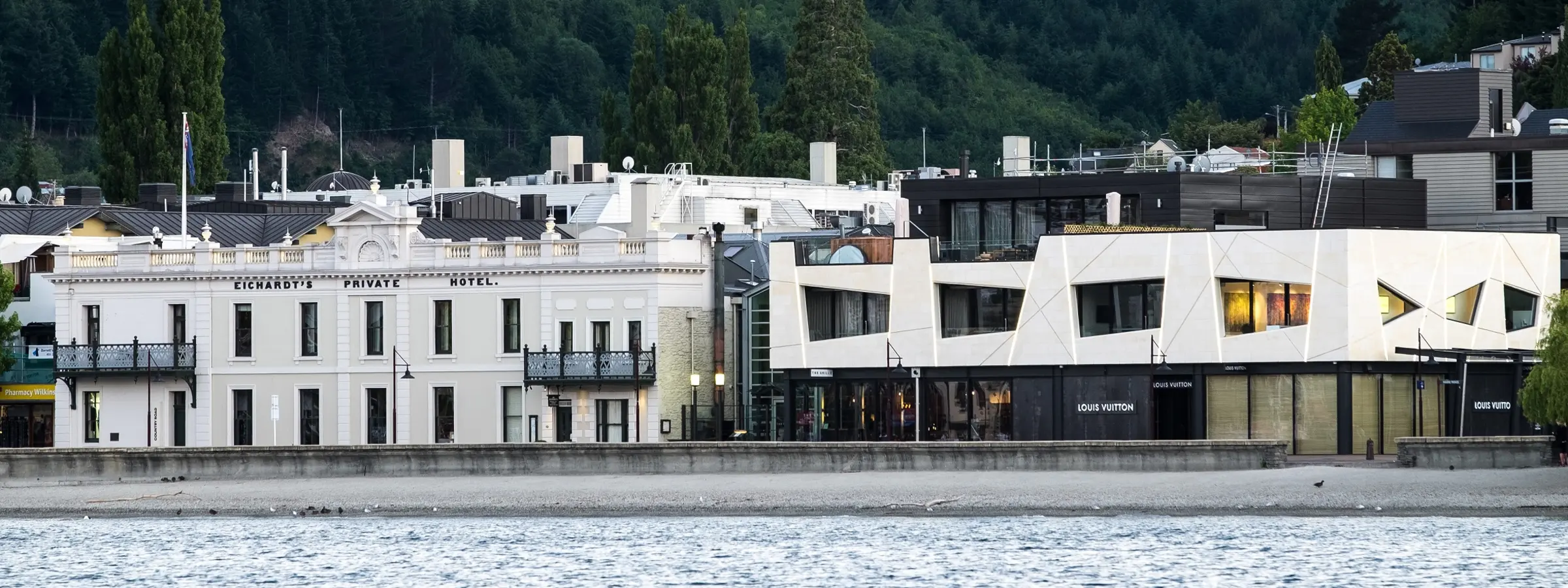News
Awards for the year’s best Southern Architecture
Dunedin’s restored Law Courts, a modern counterpart to the historic Eichardt’s Building in Queenstown and a series of small shelters for an Invercargill Estuary Walkway are among the winners in the 2018 Southern Architecture Awards which were announced at an event at Toitū Otago Settlers Museum, Dunedin last night (8 June).
The Southern Architecture Awards are part of the peer-reviewed New Zealand Architecture Awards programme run by the New Zealand Institute of Architects (NZIA). The programme, sponsored by Resene since 1990, sets the benchmark for the country’s buildings and recognises the contribution of architects to their towns and communities.
Jury convenor Regan Hall said he was delighted to make 13 awards and was particularly impressed with those projects with a heritage aspect.
“These complex projects highlight the architect’s ability to positively influence and shape cities and towns,” Hall said. “Heritage restoration work needs to be nuanced and sympathetic, while inserting a new building into a heritage context requires a complete understanding of scale and proportion.”
“It also calls for a certain amount of bravery if you do not simply wish to echo the style of a previous era.”
Hall was joined on the awards jury by Queenstown architect Rafe Maclean, Christchurch architect Vanessa Carswell, and Tommy Honey, an Auckland-based arts and architecture commentator and educator.
The Dunedin Law Courts, which the jury described as a “charming and respected way-marker within Dunedin’s history” has a positive future after an extensive refurbishment by Stephenson & Turner NZ, RDT Pacific and Aurecon.
In giving the Law Courts an award in the heritage category, Hall said, “The mark of excellent heritage restoration is the apparent effortlessness that belies the complexity of work, and that is the case here.”
“Substantial interventions have been achieved with sensitivity and to high conservation standards.”
Two projects received Commercial Architecture Awards. One was Eichardt’s II, a modern counterpart to Queenstown’s landmark lakefront Eichardt’s building.
“Designing a building to stand alongside a nineteenth-century heritage landmark on the edge of Lake Wakatipu is no mean feat,” the awards jury said.
“The success of this building lies in the reinterpretation of the adjacent heritage building, an understanding of mass, and the ‘shattered’ angles of the façade – a modern take on the ‘punched apertures’ of the older building.”
Dunedin’s new Crawford Street Carpark, designed by Opus Architecture, also won an award in the Commercial Architecture category.
“Never has a carparking building looked so good,” the jury said. “While holding its own with a strong clarity of purpose, this new amenity building has also been well integrated in scale, detail and material tones with the neighbouring historic precinct.”
A series of macrocarpa beam-and-board shelters designed by Beattie McDowell Architects for an Invercargill Estuary Walkway received a Small Project Architecture award.
“These shelters aren’t going anywhere,” the jury said. “They acknowledge local geography, ensuring that you always have your back to the wind and your eyes on a view.”
The jury made eight awards to residential projects. One, in the multi-unit category, went to Binoculars, a two-dwelling Queenstown townhouse designed by Assembly Architects.
“The level of detailing elevates materials beyond their fundamental form,” the jury said. “Everywhere you look there is something in which to take delight, including out front, where twin decks, seemingly unsupported, push bravely out towards the lake.”
Two standalone Queenstown houses also received awards. Condon Scott Architects was praised for the planning, orientation and siting of its Kelvin Heights House, which has “a variety of delightful internal and external spaces”.
“Discreet and restrained to the street, the house opens up across an impressive precipice to excellent views of Lake Wakatipu,” the jury said.
Fleck House, designed by Jeremy Kingan Architects, consists of two forms – one flat-roofed, one gabled; one made of timber, the other made of steel – with, as the jury put it, “proportions to die for”.
“The planning, however, is designed for life. This house knows its ambition and fulfils it admirably.”
The jury was impressed by the graceful way Mason & Wales Architects has inserted a house into an established Wānaka neighbourhood surrounded by mature Kānuka trees.
“From the private yet inviting entranceway, this house draws you in, through an interior gallery, to the heart of the home where views expand out through the treetops to the mountains beyond.”
Twin Peak View House, Mason & Wales’ second housing award winner, is a much larger house that has been discreetly inserted into a Glenorchy landscape.
“Thanks to the architect’s ability to manipulate scale and mass to disguise size, this large house responds to its surroundings in a confident yet recessive manner,” the jury said.
Two Dunedin houses received awards, one of them a ‘passive house’ designed by Architype. The Stuart Street House incorporates superior insulation, a smart heat recovery ventilation system and triple-glazed and acoustically quiet windows.
“Combined with careful spatial planning, a private west-facing courtyard, sensitive material selections and a bold street presence, these traits have resulted in a very distinguished addition to its street.”
Brownville Crescent House by Parker Warburton Team Architects also impressed the jury.
“The architect’s attention to the client’s brief is evident in focused views and consideration of light, while the more extravagant details have resulted in spaces where you cannot help but pause and take note,” Hall said.
The jury described the Beck Family Home, near Alexandra, as “stealth architecture”. The house designed by Bull Sullivan Architecture is “lyrical in its lightness”.
Station Cabin, designed by Crosson Architects, received the sole Interior Architecture award.
“Amber warmth glows from each well-crafted timber surface, with intertwined spaces economically using every nook and cranny,” the jury said. “This design is tight and delicate – and it is a joy to visit.”
All Southern Architecture Award winning projects are eligible for shortlisting in the New Zealand Architecture Awards. Those awards will be announced in November.





